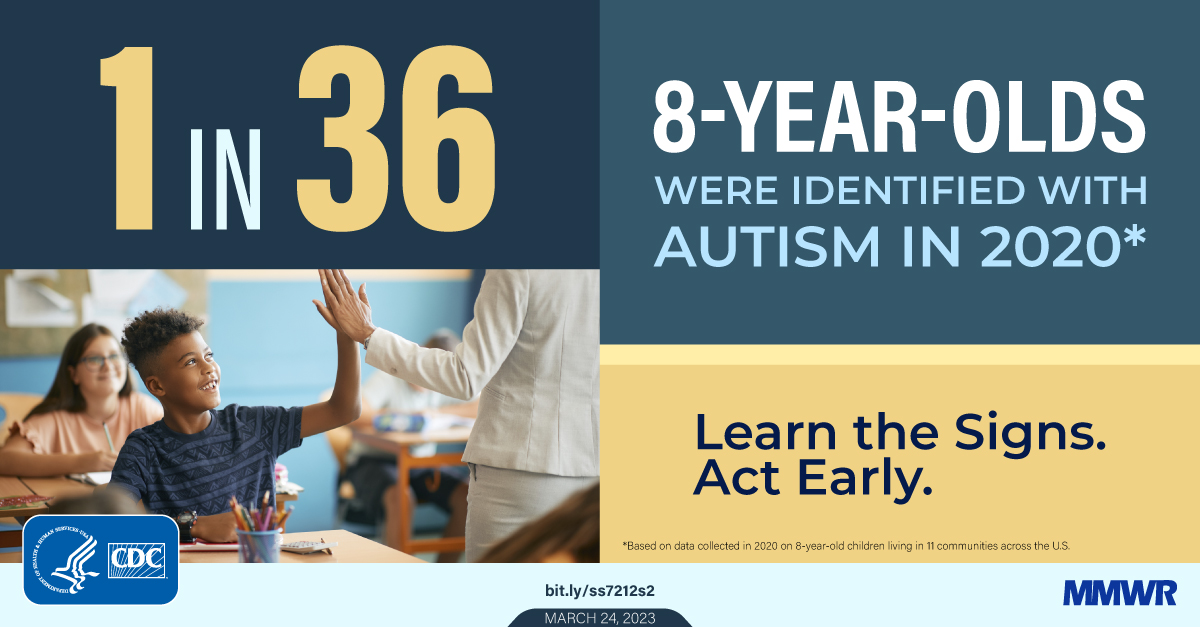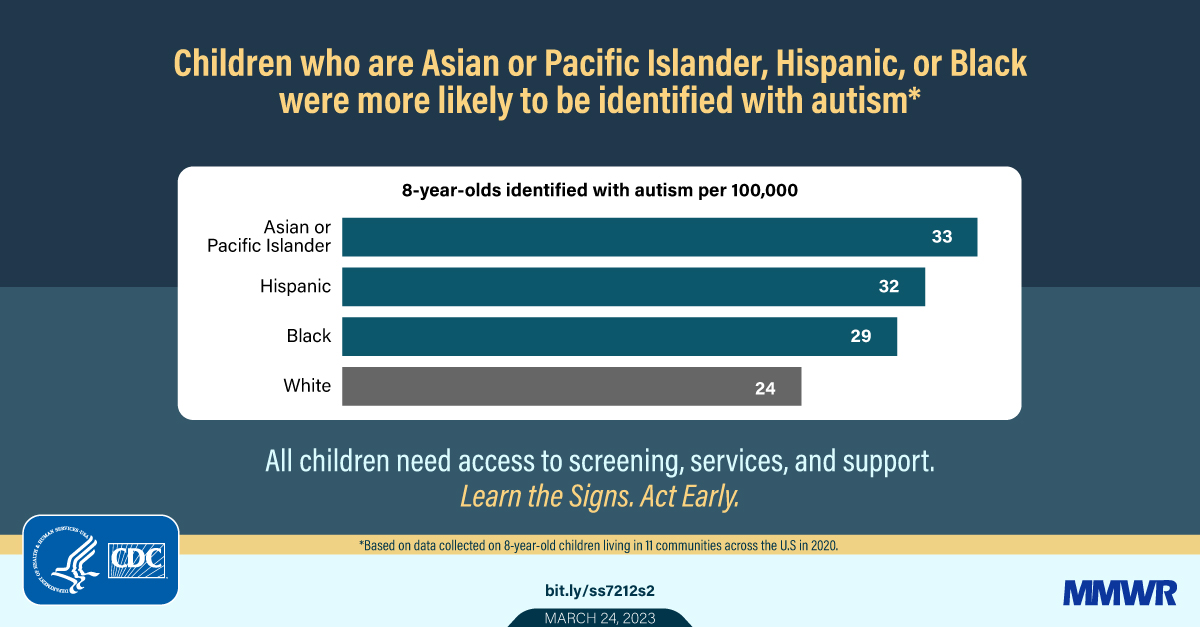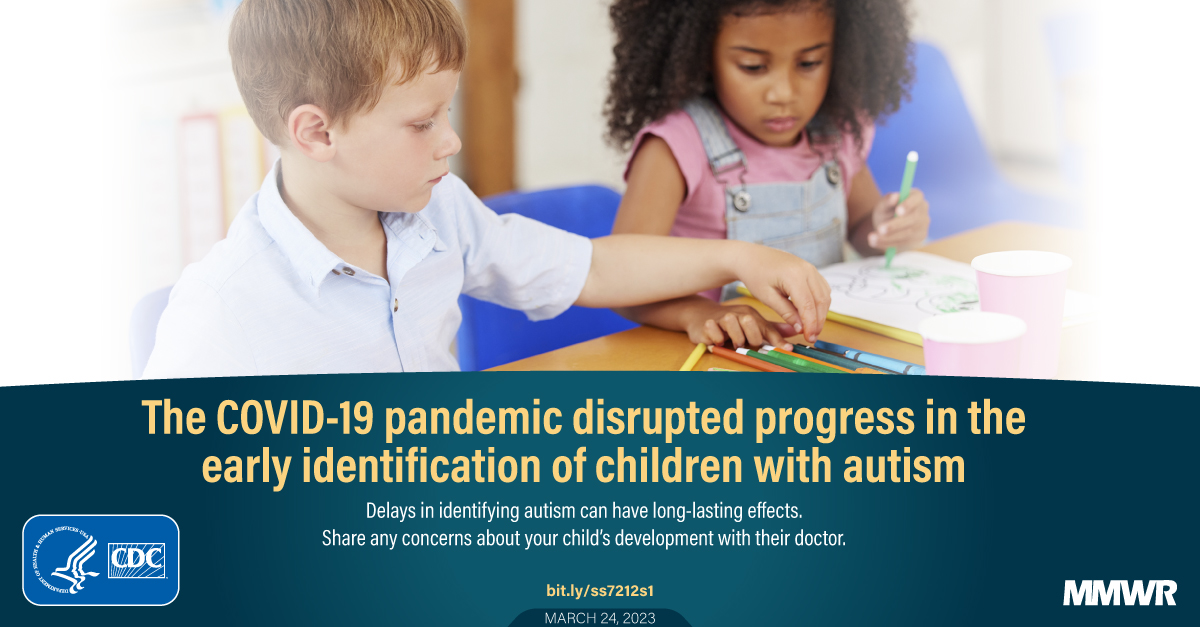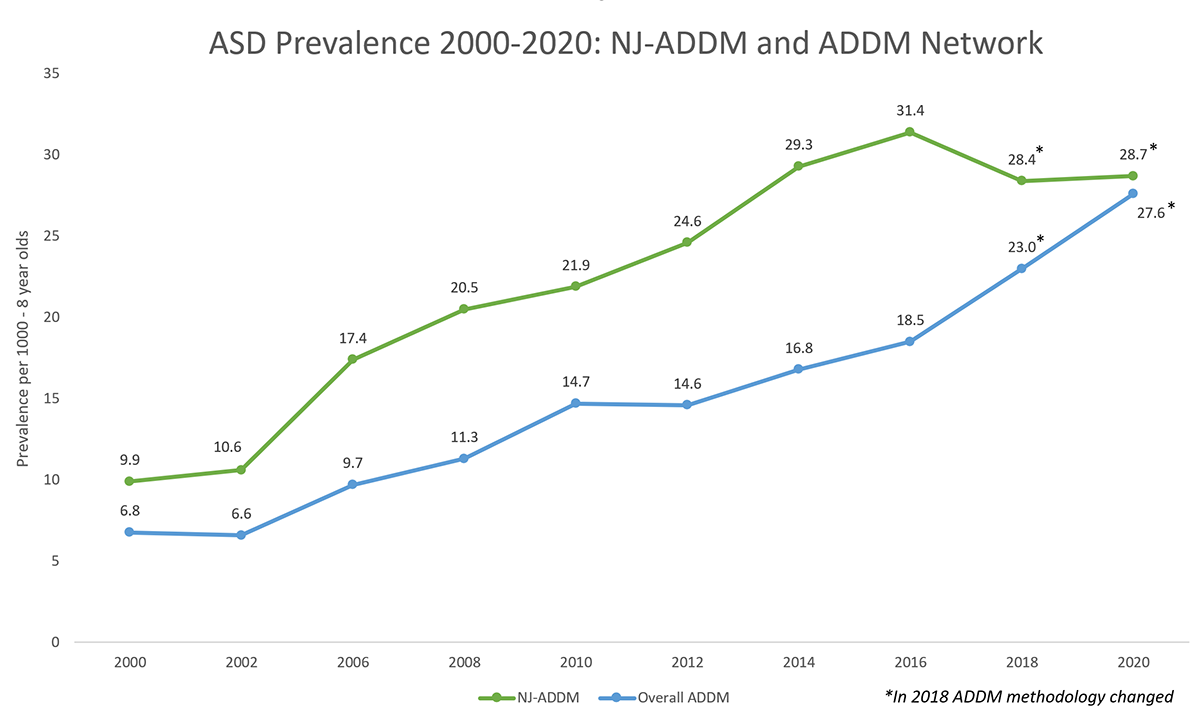Prevalence and Characteristics of Autism Spectrum Disorder Among Children Aged 8 Years – Autism and Developmental Disabilities Monitoring Network, 11 Sites, United States, 2020
Prevalence and Characteristics of Autism Spectrum Disorder Among Children Aged 4 Years – Autism and Developmental Disabilities Monitoring Network, 11 Sites, United States, 2020
MMWR | March 24, 2023
PDF – Full Article – 8-year-olds
PDF – Full Article – 4-year-olds
Key Messages
Background and Findings:
 Today, two MMWR Surveillance Summary Reports provide ASD prevalence estimates among 8-year-old and 4-year-old children in the Autism and Developmental Disabilities Monitoring (ADDM) Network. CDC and investigators in 11 states (ADDM Network) are providing updated findings on the prevalence of ASD among 8-year-olds and 4-year-olds. ADDM has tracked ASD since 2000.
Today, two MMWR Surveillance Summary Reports provide ASD prevalence estimates among 8-year-old and 4-year-old children in the Autism and Developmental Disabilities Monitoring (ADDM) Network. CDC and investigators in 11 states (ADDM Network) are providing updated findings on the prevalence of ASD among 8-year-olds and 4-year-olds. ADDM has tracked ASD since 2000.
The new overall ADDM ASD rate is one in 36, or 2.8% of children identified with ASD, up from one in 44, two years ago.
4% of boys identified with ASD, 1% of girls identified with ASD.
ASD prevalence is higher in marginalized racial and ethnic groups.
The rate of intellectual disability (ID) is much higher in Black children.
ASD rates varied across sites: Wisconsin 1.7%, California 4.5%. New Jersey prevalence rate was one in 34 or 2.9%
The age of autism identification was unchanged.
Average age ASD diagnosis in New Jersey – 38 months was lower than other states – 49 months.
A high proportion of New Jersey children with ASD (58%) had their first professional evaluation before 36 months.
ASD prevalence among 4-year-olds was 26% higher than two years ago.
Important Take-aways:
 ASD prevalence has increased without interruption in the US since 2000, from .6% to 2.7% and the primary drivers of the increase are unknown.
ASD prevalence has increased without interruption in the US since 2000, from .6% to 2.7% and the primary drivers of the increase are unknown.
The ASD rate identified in San Diego California – 4.5% overall and 7% among boys, is the highest by a comprehensive epidemiologic investigation and represents the magnitude of the public health challenge posed by rising autism.
A shift toward highest autism prevalence among minority children has been shown by this and other studies. This suggests higher risk for ASD in these populations which may have been previously masked by socioeconomic disparities in access to diagnosis and treatment.
Future ASD prevalence estimates will be higher than one in 36.
 Recommendations:
Recommendations:
Studies to identify the drivers of increasing ASD rates and the shift toward greater prevalence among minority children are needed.
Effective, comprehensive, universal screening of toddler-age children by pediatricians and other community health providers is recommended.
School districts in urban metropolitan areas should prepare to provide intensive resources to 5% of all children who have this disability.
